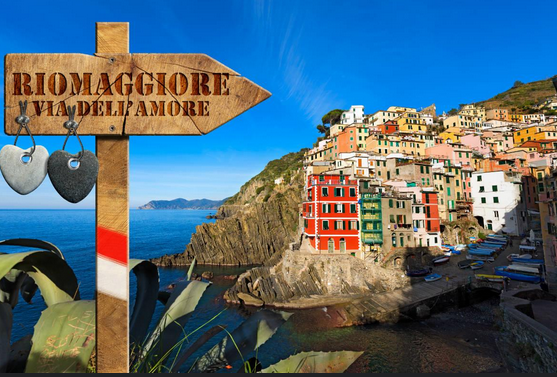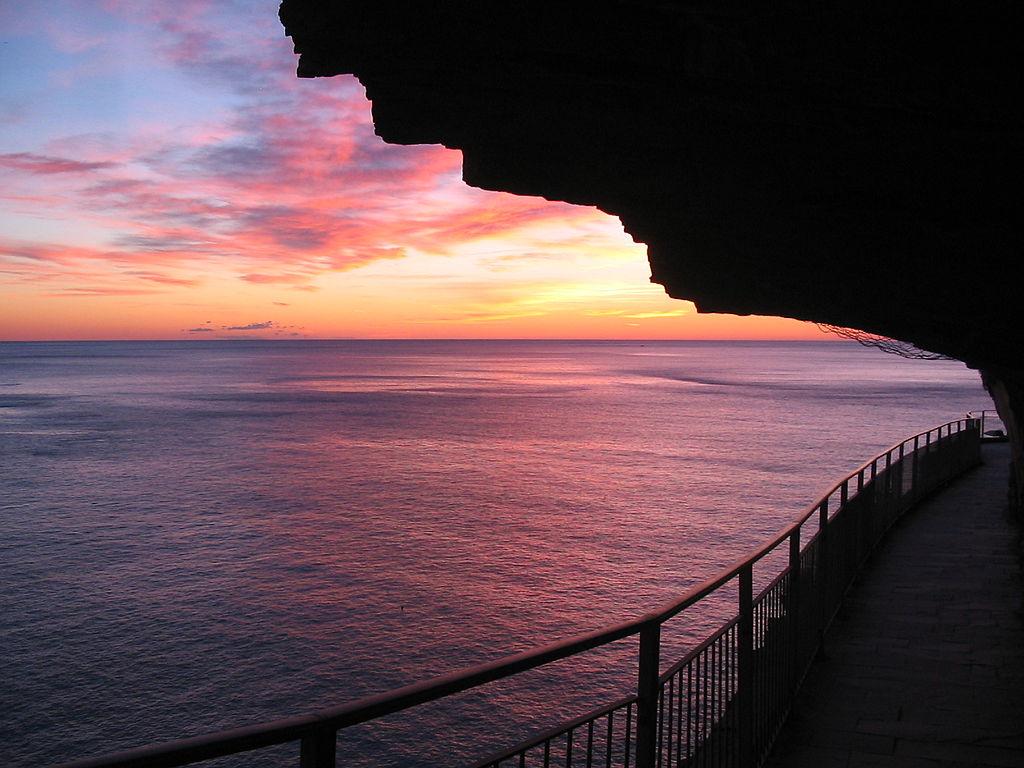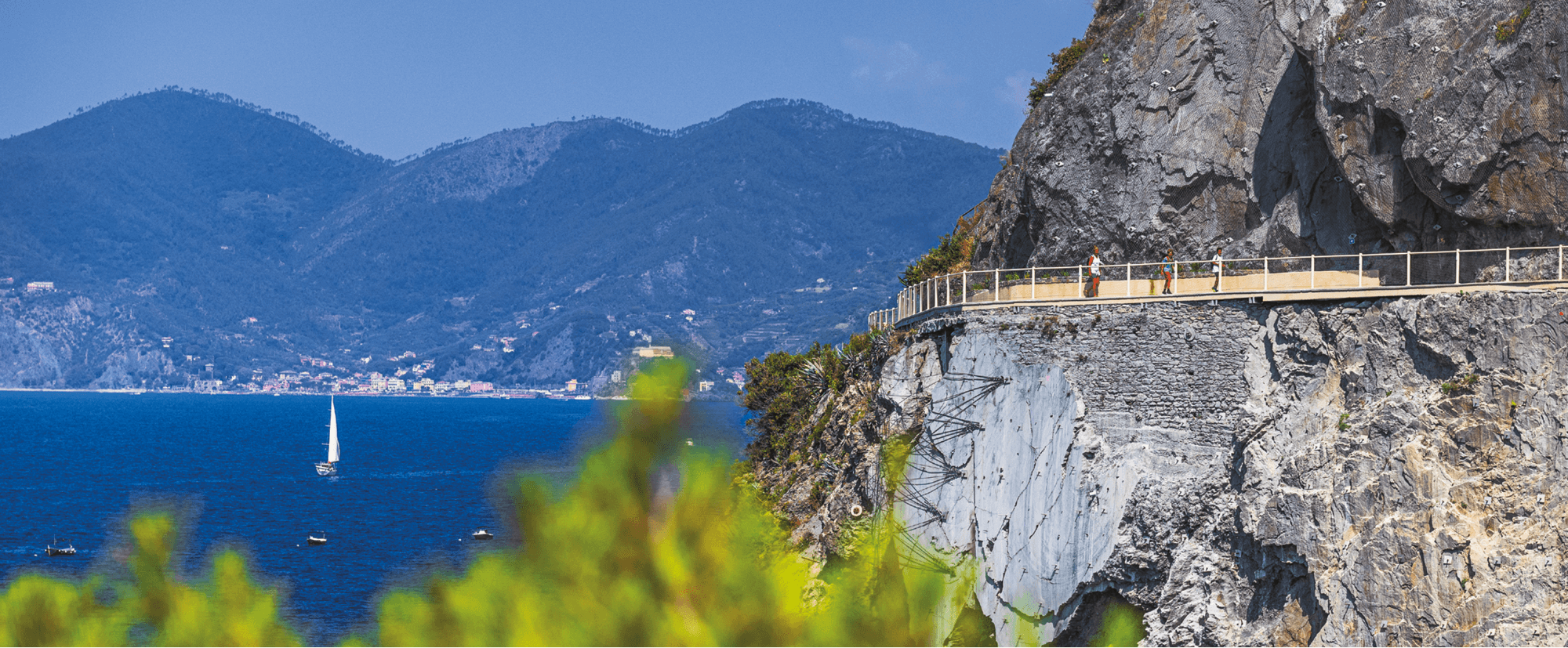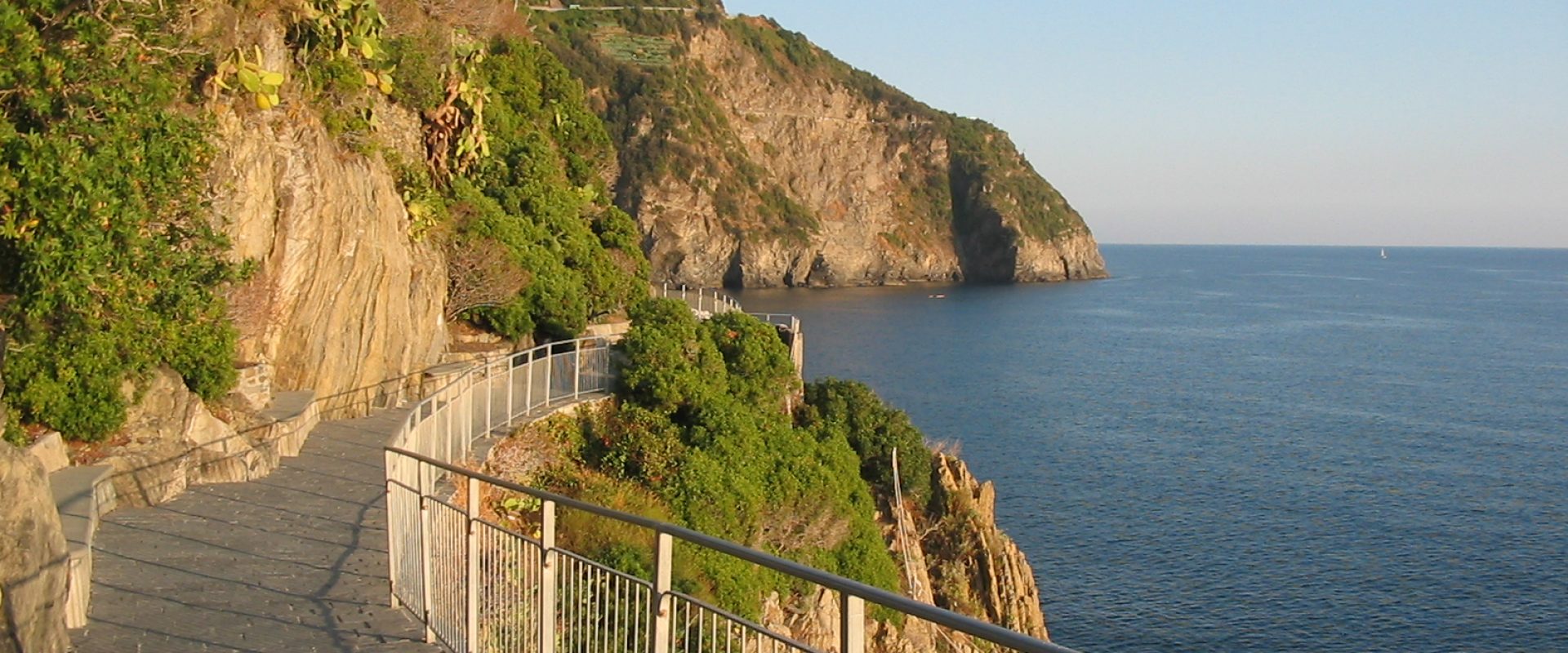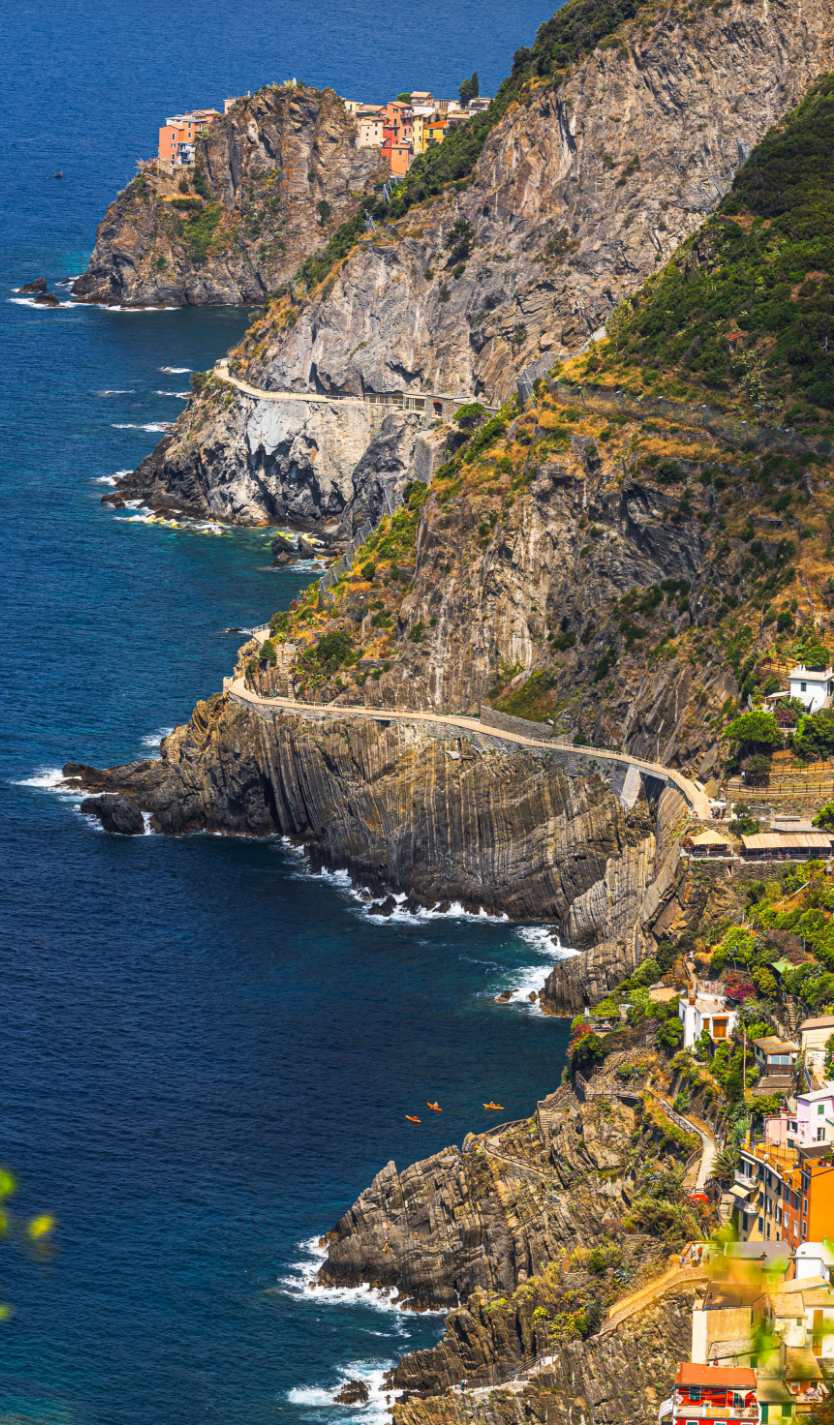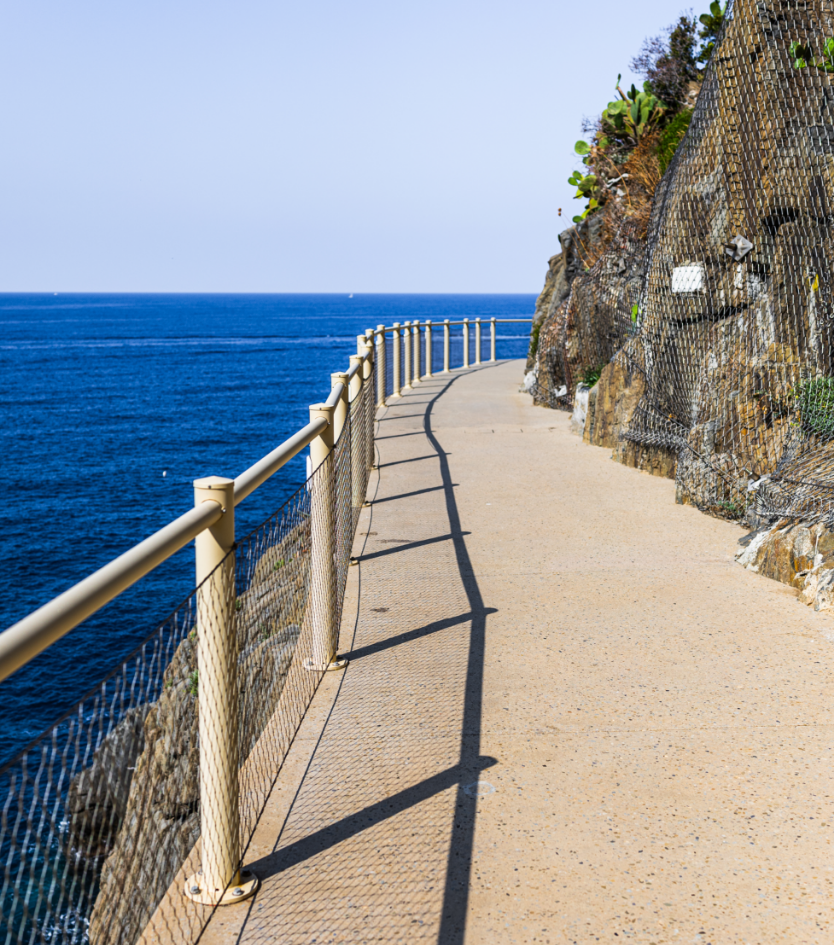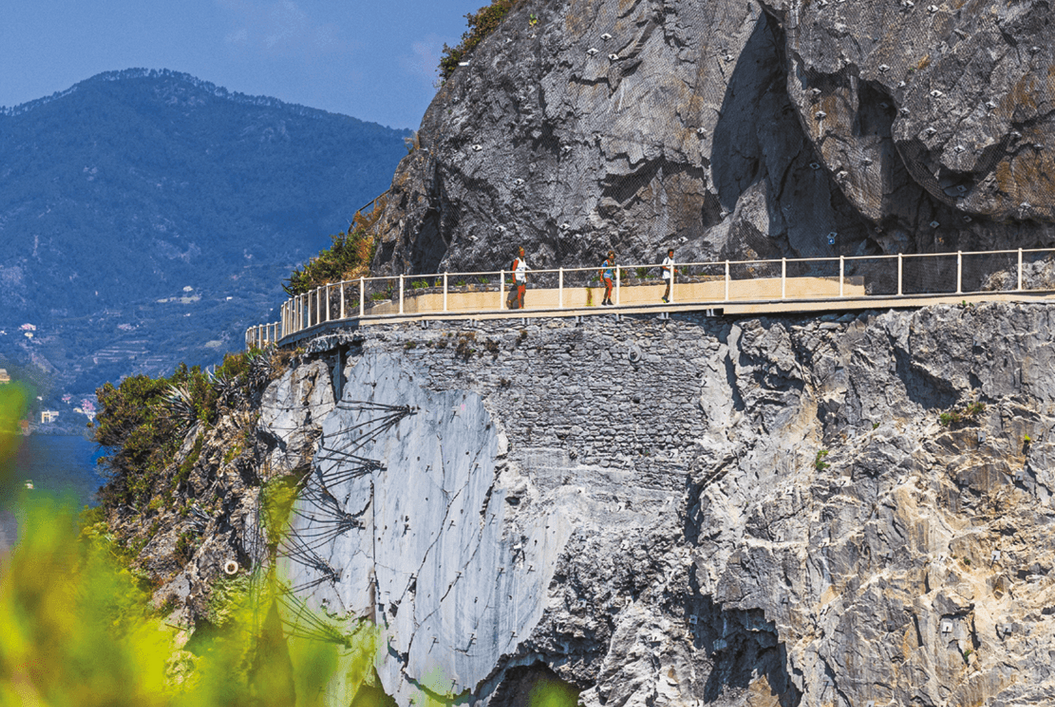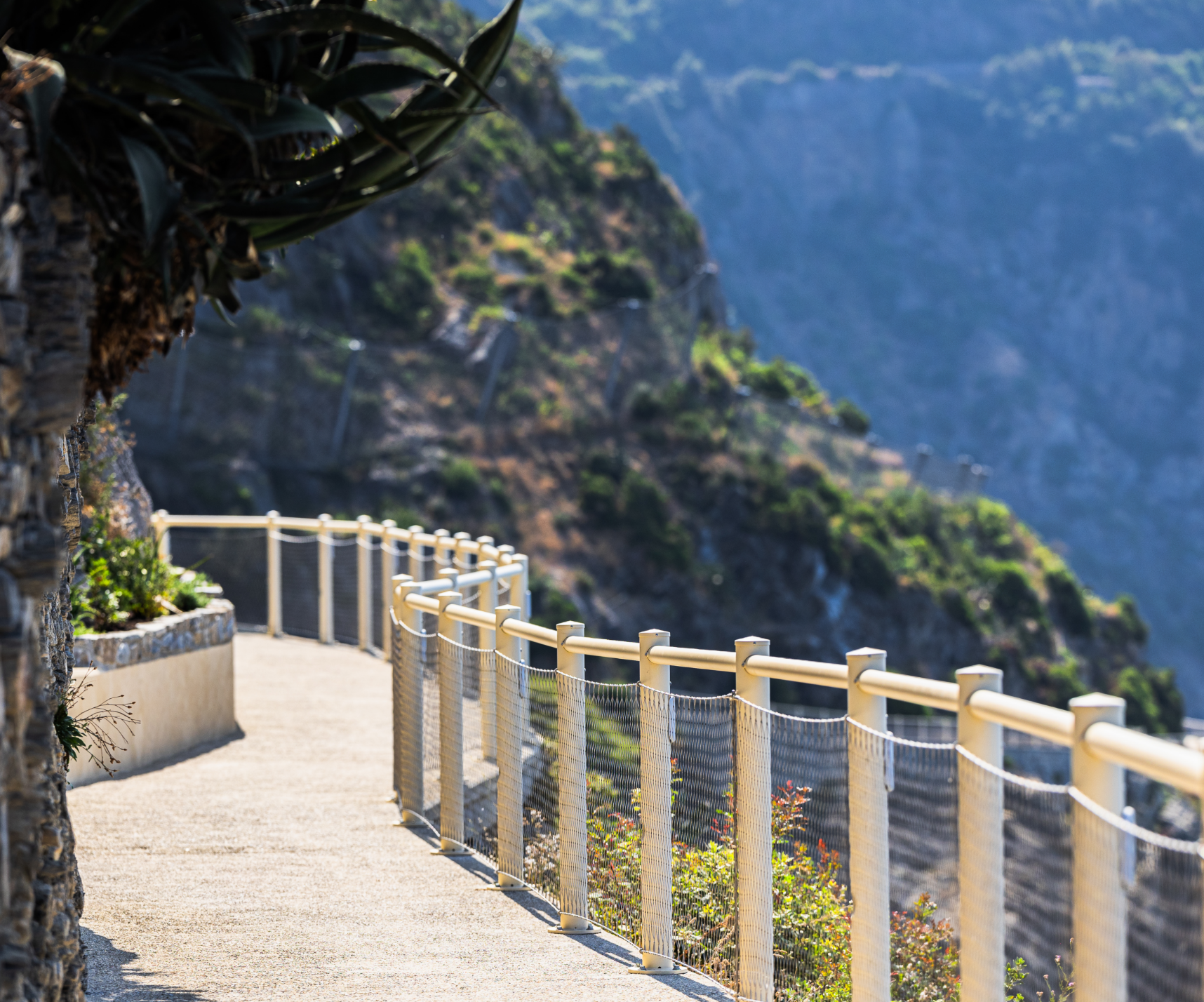Prior to this, the only means of communication between the
two villages was a long and arduous trail that traversed the valley of
the Rio Finale and crossed the Costa di Corniolo, resulting in minimal
interaction between the communities. This lack of contact is evidenced
by the fact that the two villages speak distinct dialects of the
Ligurian language, differing significantly in both vocabulary and
phonetics. In the 1930s, the local administration initiated the
construction of the path, and with the assistance of volunteers and the
generosity of residents who allowed access through their properties, the
Via dell'Amore was born.
As the path quickly became a popular destination for young lovers, an
anonymous individual decided to mark both ends of the trail with the
inscription "Via dell'Amore" using lime.
However, it is noteworthy that a
similar name already existed in the local toponymy: the trail ascending
the valley of the Rio Finale is known in the local dialect as "Viaeu de
l'Amùu." Regardless, "Via dell'Amore" was officially adopted as the
name of the road by the municipal administration of Riomaggiore, which,
in the 1960s, promoted the installation of a series of benches dedicated
to heroes and deities from Greek and Roman mythology associated with
love, as well as to poets who have celebrated love in their works.
During the 1990s, the Via dell'Amore remained closed for an extended
period due to the risk of landslides caused by the collapse of the
surrounding slopes. It was reopened to the public only after extensive
safety measures were implemented, including the construction of
containment structures and a pedestrian tunnel in the Paternaa-a area.
On September 24, 2012, four Australian tourists were injured in a
landslide along the Via dell'Amore between Riomaggiore and Manarola,
reigniting concerns about the management of such a fragile territory,
especially following the devastating flood in the La Spezia region less
than a year prior. The path was closed to the public while costly safety
work was completed; by 2015, only a short section had been reopened.
Ultimately, on July 26, 2024, the entire trail was reopened, but access
is now regulated by a ticketing system with limited entry during
specific time slots.


